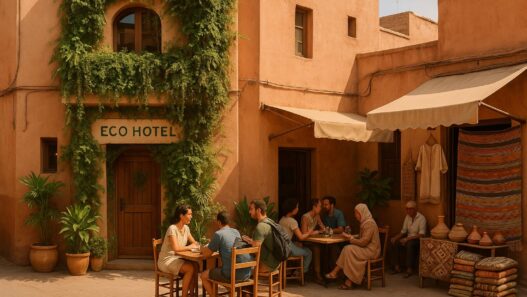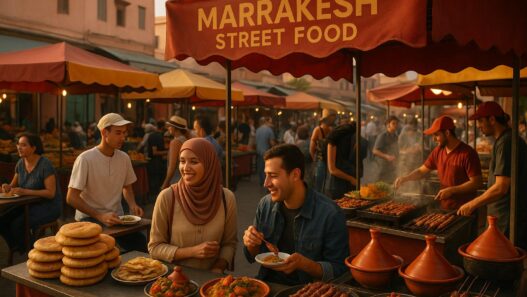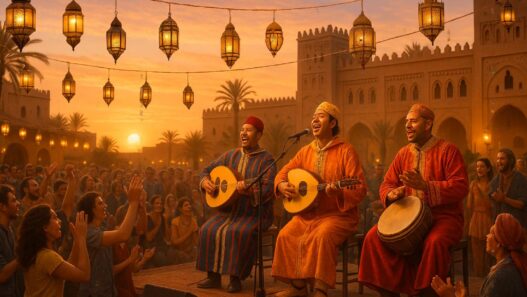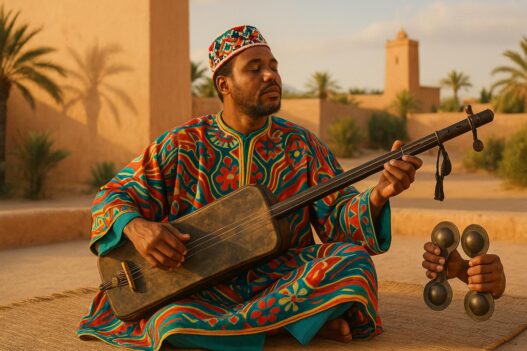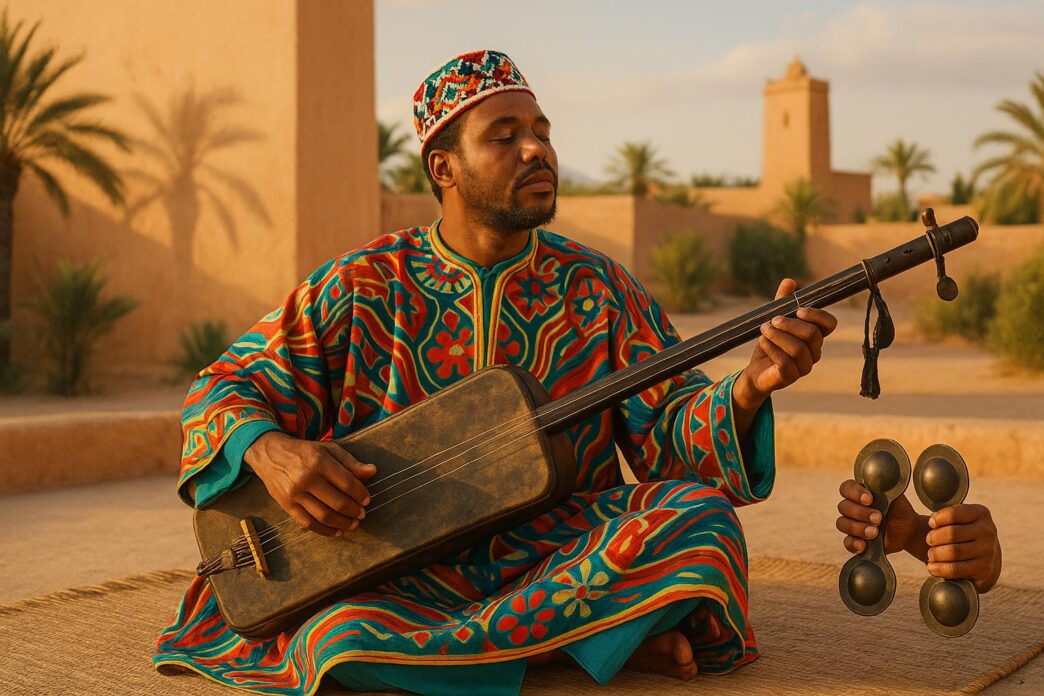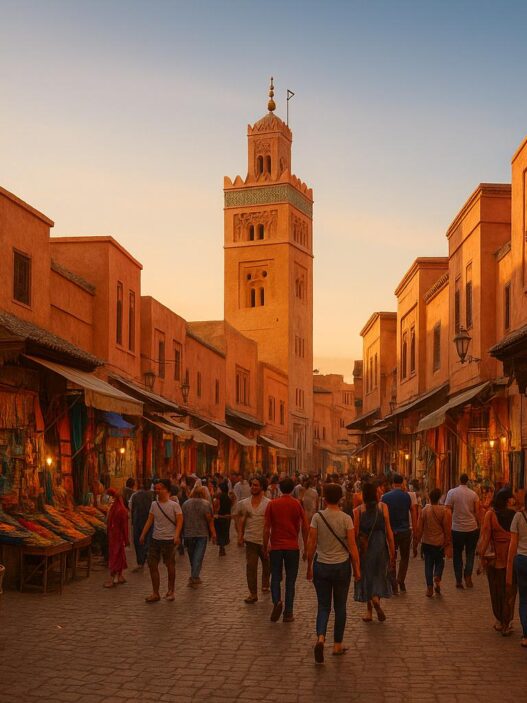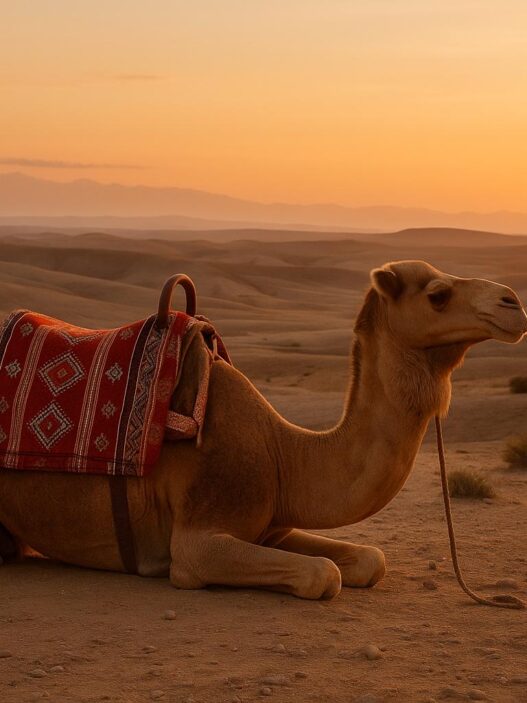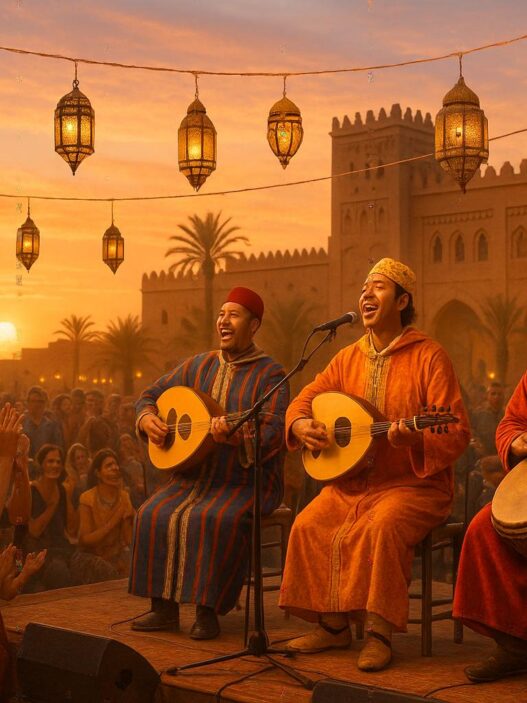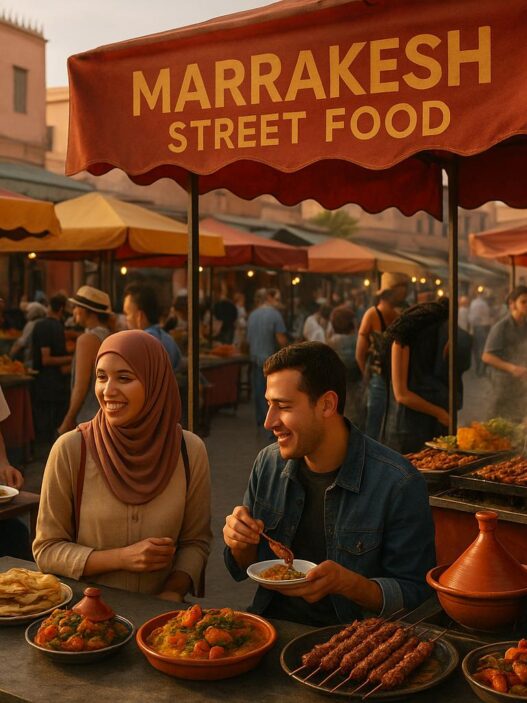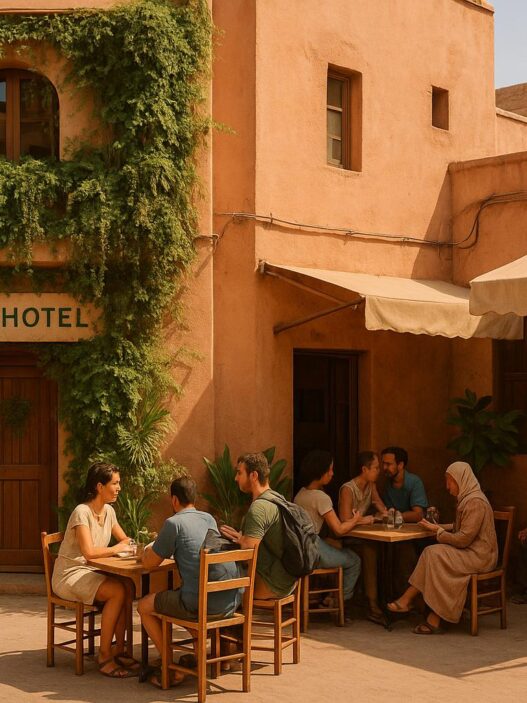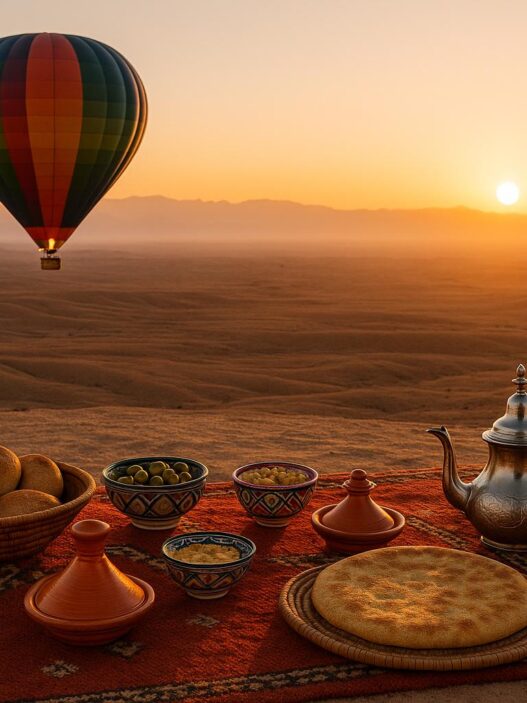Gnawa music, rooted in Morocco, blends Islamic practices with West African traditions, originating from the experiences of enslaved sub-Saharan communities over a millennium ago. Initially tied to spiritual ceremonies, it has grown into a global phenomenon, celebrated at festivals and through collaborations with international artists. This transformation raises questions about maintaining its sacred origins while appealing to wider audiences.
Key Points:
- Origins: Developed by sub-Saharan Africans brought to Morocco as slaves, combining Islamic and West African rituals.
- Core Elements: Features trance-inducing rhythms, chants, and the gimbri (a three-stringed lute).
- Global Reach: Collaborations with jazz, blues, and rock musicians have expanded its audience.
- Challenges: Balancing its spiritual roots with global entertainment demands.
- Milestones: UNESCO recognition in 2019 and annual festivals like the Gnaoua World Music Festival.
Gnawa music’s journey showcases its ability to connect past and present while navigating the complexities of cultural preservation and global appeal.
1. Gnawa Music in Morocco
Cultural Significance
In Morocco, Gnawa music is far more than just entertainment – it’s a deeply spiritual tradition with roots that trace back to enslaved people brought from sub-Saharan Africa. By 1200 A.D., over 30,000 Black soldiers were present in Morocco, laying the foundation for this vibrant cultural expression. The Gnawa community blended Islamic beliefs with West African rituals, creating a unique heritage. Their ceremonies, which weave together music, dance, and ritual sacrifices, are believed to help participants connect with the spiritual world through trance states.
Dr. Chouki El Hamel explains:
"The Gnawa have, over many generations, productively negotiated their forced presence in Morocco to create acceptance and group solidarity. Unlike the conventional question in Black America, ‘Who are we?,’ the Gnawa ask, ‘Who have we become?’ Similar to the model of ‘creolization’ – the integration of freed black slaves into the French cultural landscape of the American state of Louisiana, the Gnawa have created a model of their own creolization and integration into the Moroccan social landscape."
This process of blending and adapting has elevated Gnawa music, transforming it from a marginalized tradition into a celebrated part of Morocco’s cultural identity. Its deep spiritual and cultural roots have allowed it to evolve while retaining its essence.
Musical Style and Adaptations
Gnawa music, though originally tied to sacred ceremonies, has gradually expanded its reach. Once confined to private spiritual gatherings, it now resonates with broader audiences in secular settings. Modern Gnawa musicians skillfully adapt their performances to engage contemporary listeners while staying true to the tradition’s spiritual heart. These adaptations ensure that the music evolves without losing its core identity, striking a balance between honoring its origins and embracing new influences.
Audience and Global Reach
The evolution of Gnawa music has not only modernized its sound but also broadened its audience. What once belonged to a marginalized community has become a celebrated symbol of Moroccan culture. Its growing popularity has led to international collaborations and performances at global festivals, showcasing its role in cultural exchange. This increased recognition has also created economic opportunities for Gnawa musicians, allowing the tradition to flourish as both a spiritual practice and a dynamic expression of Morocco’s cultural heritage.
2. International Gnawa Music
Cultural Significance
As Gnawa music has gained international attention, it has become a powerful emblem of Moroccan identity and African heritage. Today, it acts as a cultural bridge, connecting people from diverse backgrounds. However, this global recognition has sparked discussions about how to balance preserving its sacred roots with adapting to new contexts. While some traditionalists express concern over the potential loss of meaning when sacred elements are performed in secular settings, others see this global exposure as vital for keeping the tradition alive. This ongoing dialogue between preserving authenticity and embracing change continues to shape the evolution of Gnawa performances, paving the way for creative reinterpretations of its sound.
Musical Style and Adaptations
Global exposure has brought new dimensions to Gnawa music, blending it with genres like jazz, blues, rock, and electronic music. One of the most notable innovators, Maalem Mokhtar Gania, transformed the traditional gimbri – a three-stringed bass lute – by electrifying it and adding frets and decorative elements. These changes expanded its musical range, making it easier to integrate into modern ensembles and appeal to wider audiences. Collaborations with renowned artists like jazz legend Randy Weston and Western musicians such as Robert Plant and Bill Laswell have further showcased the genre’s ability to evolve while retaining its essence.
Audience and Global Reach
The audience for Gnawa music has grown significantly, thanks to these innovations and international collaborations. Performers like Maalem Hamid el Kasri, one of Morocco’s leading Gnawa artists, now draw massive crowds, filling stadiums across Africa and Europe. The Gnaoua World Music Festival in Essaouira has emerged as the genre’s premier global stage, attracting over 500,000 visitors annually. This festival serves as a creative hub where traditional maalems collaborate with international musicians, blending authentic Gnawa with modern influences to create unforgettable performances.
This global recognition has elevated Gnawa musicians to the status of cultural ambassadors, opening up new economic opportunities and expanding their reach beyond Moroccan and North African communities. Today, their audience includes world music enthusiasts, jazz aficionados, and a diverse range of listeners from around the globe.
For American travelers, experiencing Gnawa music firsthand is possible at major Moroccan festivals or performances in cities like Marrakesh. These events offer a unique opportunity to see how this ancient tradition continues to captivate audiences worldwide. Resources like The Marrakesher provide helpful tips for English-speaking visitors looking to explore the cultural context and discover authentic performances during their Moroccan adventures.
The Gnawa: Abdellah El Gourd and Randy Weston Full Performance
sbb-itb-fa26f1f
Pros and Cons
The evolution of Gnawa music on the global stage brings both opportunities and challenges. As this ancient art form transitions from its traditional roots to a broader international audience, it faces a delicate balancing act between preserving its essence and embracing modernity.
| Aspect | Traditional Gnawa Music | Globalized Gnawa Music |
|---|---|---|
| Cultural Preservation | Preserves authentic spiritual practices and reinforces community identity | Expands global awareness but risks losing key ritual elements |
| Innovation | Stays true to historical forms, with limited room for creative change | Encourages fusion with genres like jazz, blues, and electronic music |
| Audience Engagement | Creates meaningful connections within local communities | Reaches global audiences through festivals and concerts |
| Economic Impact | Relies on modest, community-based income | Opens doors to larger commercial opportunities via global collaborations |
| Performance Context | Rooted in sacred healing ceremonies (lila) and communal gatherings | Shifts toward entertainment-focused settings like festivals and concerts |
This comparison highlights the trade-offs that come with blending tradition and modernity.
Traditional Gnawa music excels in preserving its spiritual and communal roots, offering a deep connection to its origins among descendants of enslaved West Africans in Morocco. However, its focus on ceremonial settings and local audiences can make it harder to sustain, especially as younger generations may see these practices as less relevant.
On the other hand, global exposure breathes new life into the genre. Artists like Maalem Mokhtar Gania have adapted traditional instruments, such as electrifying the gimbri and adding frets to expand its sound. These innovations not only attract contemporary audiences but also ensure the music remains dynamic and evolving.
However, this global reach comes with risks. When sacred elements are repackaged for secular performances or simplified for mass appeal, the spiritual depth of the music can be compromised. Misrepresentation or marketing without proper context further threatens its integrity.
That said, global success brings undeniable benefits. Festivals and international collaborations provide economic opportunities and raise awareness about Gnawa traditions. This exposure positions practitioners as cultural ambassadors, fostering intercultural dialogue while showcasing Morocco’s rich heritage on the world stage.
Striking the right balance is key. Many within the Gnawa community emphasize the importance of retaining core spiritual elements while embracing innovation to keep the tradition relevant. While some worry about over-commercialization, others view international recognition as essential for ensuring the survival of this art form, enabling it to thrive in a connected world and preserve its cultural roots for future generations.
For Americans eager to witness this rich tradition, resources like The Marrakesher can guide them in exploring both traditional and modern Gnawa performances during trips to Morocco.
Conclusion
Gnawa music’s journey – from its sacred roots in Moroccan spiritual ceremonies to becoming a global cultural symbol – tells a story of resilience and transformation. What began as a deeply spiritual practice within Morocco’s Gnawa communities has grown into a vibrant cultural connection, linking African heritage with audiences worldwide while staying true to its origins.
This remarkable evolution includes key milestones that highlight its rising prominence. The annual Gnaoua World Music Festival in Essaouira, for instance, now attracts over 400,000 attendees from around the globe, showcasing its universal appeal. In 2019, UNESCO added Gnawa music to its list of Intangible Cultural Heritage of Humanity, a recognition that solidified its standing as one of Morocco’s most treasured musical traditions.
Collaborations with internationally acclaimed artists such as Pharoah Sanders and Randy Weston have further elevated Gnawa music, bringing it to the forefront of the global music scene . These partnerships underscore its ability to transcend boundaries while maintaining its core identity.
The Gnaoua World Music Festival also serves as a testament to the genre’s power to unite. With participants from over 40 countries, the festival fosters peace and dialogue across cultures. Neila Tazi, the festival’s co-founder, describes it as a space for meaningful social exchange and cross-cultural understanding.
Gnawa’s evolution doesn’t stop there. Younger generations of musicians are infusing traditional sounds with electronic elements, ensuring the genre stays relevant and dynamic for years to come. This blend of the old and the new allows visitors to experience both the rich heritage and the fresh innovations of Gnawa music.
For American travelers looking to immerse themselves in authentic cultural experiences, Gnawa music offers a fascinating glimpse into Morocco’s vibrant traditions. Whether through its ceremonial roots or its modern adaptations, Gnawa music provides a deeper appreciation of a tradition that continues to connect people across continents.
FAQs
How has Gnawa music’s rise to international fame influenced its traditions and cultural importance?
The worldwide recognition of Gnawa music has created both exciting opportunities and complex challenges for its traditional roots and deeper cultural meaning. Being named a UNESCO intangible cultural heritage has played a key role in safeguarding its sacred and ritualistic aspects. At the same time, collaborations with global artists have introduced Gnawa to broader audiences, merging its traditional rhythms with modern styles.
This surge in popularity has deepened global appreciation for Gnawa’s rich history and spiritual essence. However, it has also raised important questions about how to maintain its authenticity. While international exposure has allowed the music to grow and adapt, it’s crucial to honor and protect its cultural and spiritual foundations as it continues to captivate audiences across the globe.
What challenges do Gnawa musicians face in preserving their spiritual traditions while adapting to modern influences?
Gnawa musicians face a challenging task: preserving the sacred traditions of their music while appealing to modern, global audiences. Their performances, deeply tied to spiritual rituals that invoke spirits and aim to heal, carry a profound cultural significance. However, reinterpreting these elements to resonate with a broader audience can sometimes risk losing their original depth and meaning.
Incorporating modern genres like jazz, hip-hop, or electronic music adds another layer of complexity. While these styles can expand the reach of Gnawa music, they also create tension between honoring its spiritual roots and catering to contemporary tastes. This ongoing balancing act reflects the struggle to safeguard the heart of Gnawa culture while navigating its growing global presence.
How have collaborations with international artists shaped the evolution and global popularity of Gnawa music?
Collaborations with international artists have been instrumental in bringing Gnawa music from its Moroccan roots to a global audience. By merging Gnawa’s distinct rhythms and melodies with genres like jazz, blues, and reggae, these partnerships have given rise to fresh sounds that appeal to listeners across the world.
These joint efforts have also taken Gnawa music to international stages, including music festivals and cultural events, showcasing its rich history to new audiences. This ongoing exchange allows Gnawa to grow and adapt while staying true to its origins, securing its place as a vibrant and influential force in global music.





